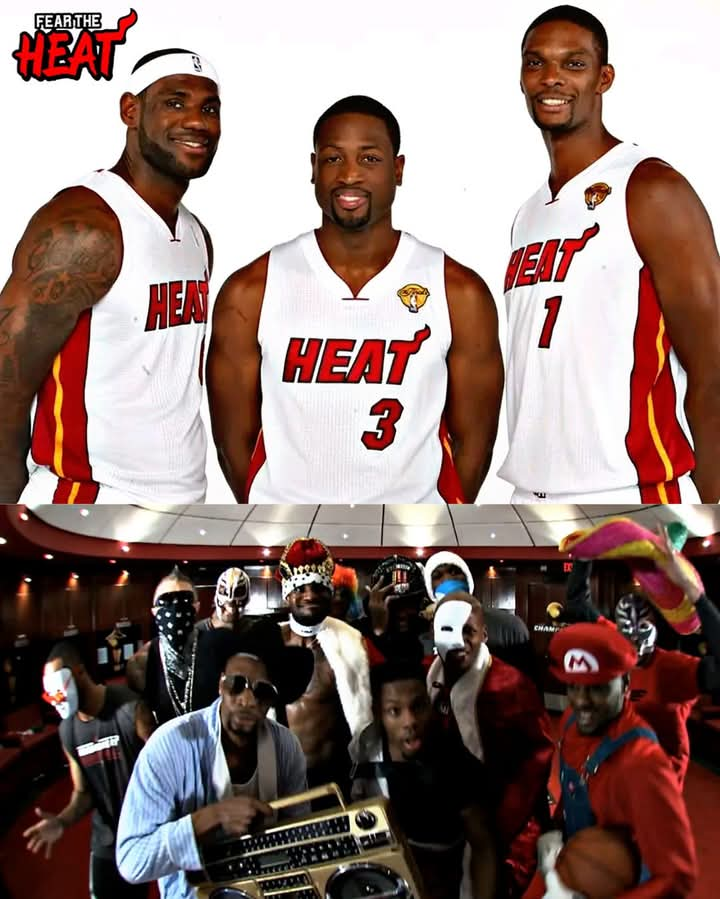No Team Matched the Aura of the Heat Big 3 — Miami’s Golden Era Hit Different and Burned Brighter Than the Rest
From 2010 to 2014, the Miami Heat were more than just a basketball team—they were a cultural phenomenon. When LeBron James announced he was “taking his talents to South Beach” to join forces with Dwyane Wade and Chris Bosh, it triggered a seismic shift in the NBA landscape. The formation of the “Heat Big 3” ignited a golden era in Miami, one filled with dominance, drama, and an unmistakable aura that no team before or since has quite replicated.
The moment those three superstars came together, the Heat transformed into a spectacle. They weren’t just winning games—they were rewriting what a modern NBA dynasty could look like. The team’s swagger, the electric atmosphere at American Airlines Arena, the pressure-filled Finals runs, and the drama surrounding them made every game must-see TV. Miami became the epicenter of basketball’s biggest storylines and style, a team that combined substance with spectacle.
In terms of success, the Big 3 era delivered: four consecutive NBA Finals appearances (2011–2014) and back-to-back championships in 2012 and 2013. But the numbers tell only part of the story. The aura around the Heat during this period transcended stats. It was about the energy—the way they carried themselves with confidence that sometimes bordered on villainous arrogance, yet also with a hunger to prove the doubters wrong.
LeBron evolved into the most complete version of himself in Miami. Under Erik Spoelstra’s system and Pat Riley’s guidance, he fine-tuned his game, becoming a defensive juggernaut, a clutch performer, and the league’s most dominant force. Wade, the soul of the franchise, was the perfect complement—charismatic, explosive, and willing to adjust his role for the greater good. Bosh, often underappreciated, was the glue—sacrificing stats and taking on the gritty, often overlooked tasks that held the team together.
Off the court, they had star power unmatched in the league. Commercials, highlight reels, magazine covers—they were everywhere. The Heat became both heroes and villains in the eyes of the public. Some rooted for their dominance; others hoped they’d fail. But no one could ignore them.
The “Heatles,” as they were dubbed, brought a rockstar vibe to the NBA. Road games felt like home games. Arenas sold out just to watch them warm up. The Heat’s brand became global, setting a template for future superteams. But no superteam since has matched that same magnetic pull. Brooklyn’s attempt with Kevin Durant, James Harden, and Kyrie Irving? Too brief. Golden State’s run? Historically great, yes—but lacking that edgy, media-frenzied aura that Miami owned.
The Heat Big 3 weren’t perfect—they lost their first Finals to the Mavericks, and their run ended at the hands of a hungry Spurs team in 2014—but even their failures added to the legend. Each setback deepened the narrative, making their triumphs even sweeter.
In the end, the Heat Big 3 weren’t just champions; they were icons of an era. No team before or after captured the attention, emotion, and electricity of the league quite like them. That Heat aura? It hit different. It still does.
